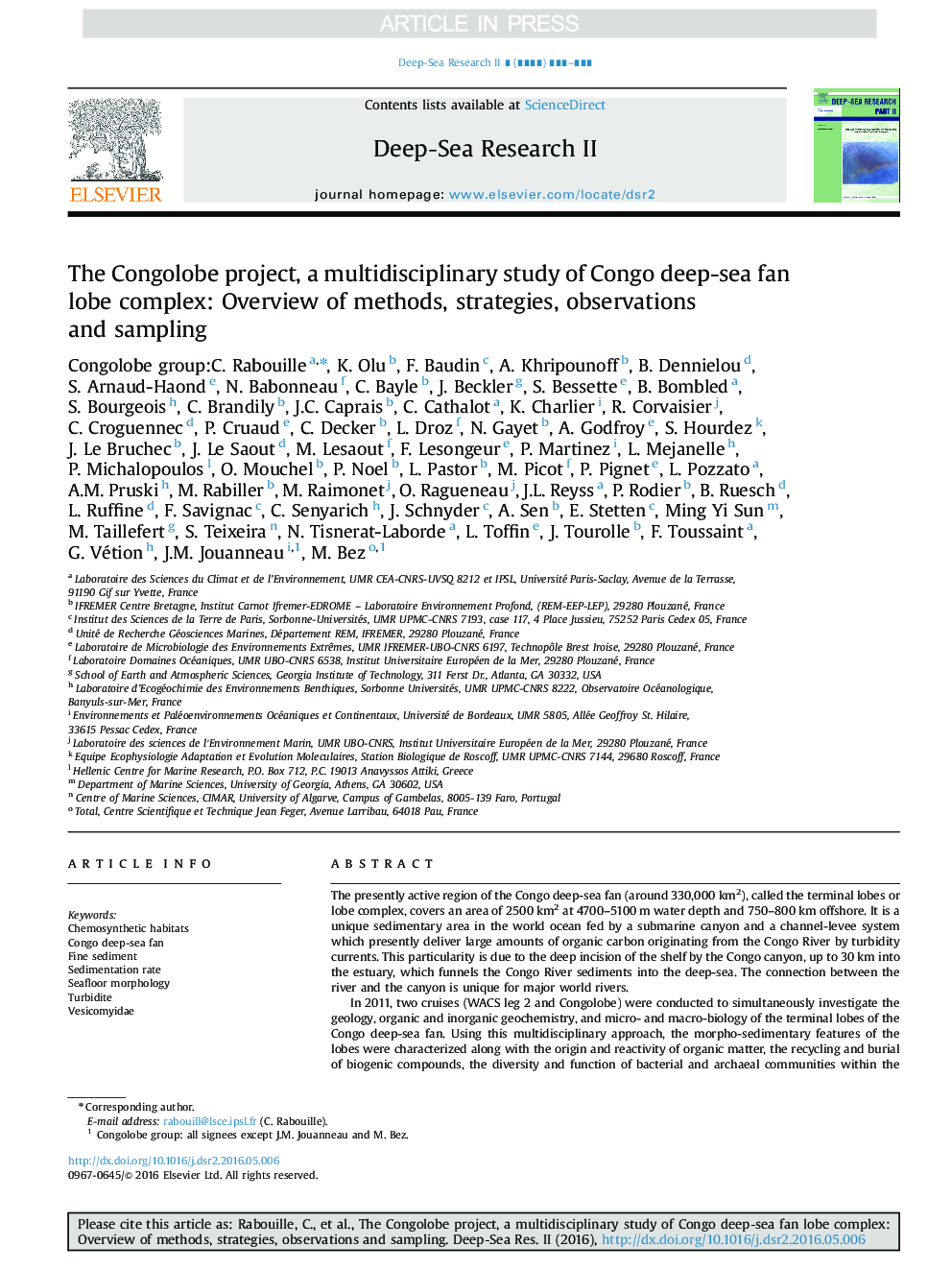| Article ID | Journal | Published Year | Pages | File Type |
|---|---|---|---|---|
| 5764797 | Deep Sea Research Part II: Topical Studies in Oceanography | 2017 | 18 Pages |
Abstract
This paper aims to provide the general context of this multidisciplinary study. It describes the general features of the site and the overall sampling strategy and provides the initial habitat observations to guide the other in-depth investigations presented in this special issue. Detailed bathymetry of each sampling site using 0.1-1 m resolution multibeam obtained with a remotely operated vehicle (ROV) shows progressive widening and smoothing of the channel-levees with increasing depth and reveals a complex morphology with channel bifurcations, erosional features and massive deposits. Dense ecosystems surveyed in the study area gather high density clusters of two large-sized species of symbiotic Vesicomyidae bivalves and microbial mats. These assemblages, which are rarely observed in sedimentary zones, resemble those based on chemosynthesis at cold-seep sites, such as the active pockmarks encountered along the Congo margin, and share with these sites the dominant vesicomyid species Christineconcha regab. Sedimentation rates estimated in the lobe complex range between 0.5 and 10 cm yrâ1, which is 2-3 orders of magnitude higher than values generally encountered at abyssal depths. The bathymetry, faunal assemblages and sedimentation rates make the Congo lobe complex a highly peculiar deep-sea habitat driven by high inputs of terrigenous material delivered by the Congo channel-levee system.
Related Topics
Physical Sciences and Engineering
Earth and Planetary Sciences
Geology
Authors
Congolobe group: Congolobe group:, C. Rabouille, K. Olu, F. Baudin, A. Khripounoff, B. Dennielou, S. Arnaud-Haond, N. Babonneau, C. Bayle, J. Beckler, S. Bessette, B. Bombled, S. Bourgeois, C. Brandily, J.C. Caprais, C. Cathalot, K. Charlier,
